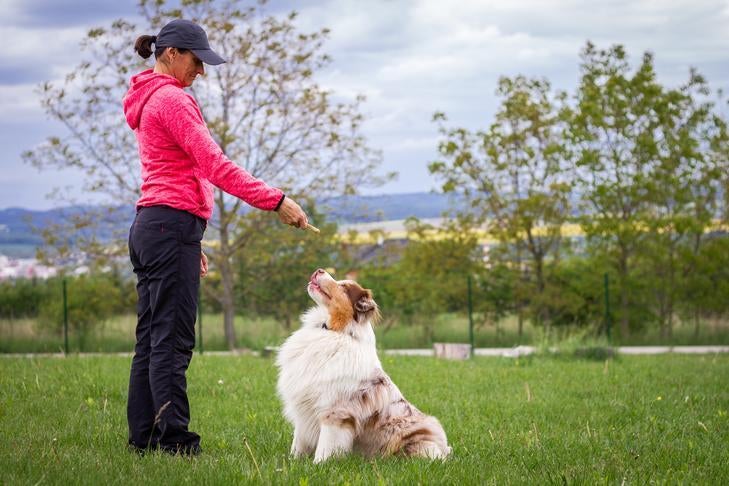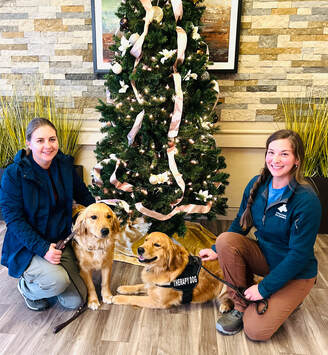Important Tips for Successful Dog Training: An Overview for Animal Owners
Reliable canine training is a diverse procedure that needs a tactical method customized to both the pet dog's character and the owner's goals. Understanding just how to navigate these obstacles can considerably improve the training experience, eventually changing the connection in between proprietor and dog.
Comprehending Canine Habits
Comprehending pet dog actions is essential for efficient training and promoting a harmonious relationship in between canines and their proprietors. dog training. Pet dogs connect largely with body language, articulations, and actions, making it crucial for proprietors to translate these signals precisely.

Socializing plays a substantial role in pet dog actions; exposure to different environments, people, and various other pets can considerably impact a canine's personality. Elements such as type features and private temperament should direct training approaches, as some types might have certain behavior qualities that require tailored approaches. By recognizing these components, proprietors can develop a supportive environment that urges favorable actions, bring about successful training end results and a much deeper bond with their animals.
Establishing Regular Commands
Reliable interaction with your dog begins with establishing regular commands. This fundamental component of training is important for cultivating understanding between you and your animal. Uniformity in the commands you utilize ensures that your pet can reliably associate certain words or expressions with the desired behaviors.
When picking commands, select clear, distinct words that are easy to state and separate from one an additional. Prevent utilizing similar-sounding commands that may puzzle your canine. Utilizing "rest" and "remain" is appropriate, however "rest" and "struck" might lead to misunderstandings.
In addition, keep the very same tone and quantity for each and every command. Dogs are delicate to vocal hints, so differing your tone can create complication.
It is just as important to make sure that all household members get on the same page regarding the commands used. A united front in command use will certainly protect against blended signals and enhance the discovering procedure.
Favorable Reinforcement Strategies
The power of favorable support in dog training lies in its capacity to encourage wanted habits through benefits and appreciation. This strategy is grounded in the principle that actions adhered to by favorable end results are more probable to be duplicated. By incorporating positive support into your training program, you can properly shape your pet dog's habits in a useful fashion.
To apply favorable support, it's vital to recognize what inspires your canine, whether it be deals with, toys, or spoken appreciation. When your pet executes a preferred action, such as sitting on command, immediately reward them with a treat or affection. This organization in between the command and the favorable result strengthens their understanding.
It's vital to timing the rewards appropriately; supplying the support within seconds of the wanted behavior aids your canine make the link (dog training). Additionally, uniformity is crucial-- make certain that all household participants use the exact same commands and benefit systems to stay clear of confusion

Gradually, you can lower the frequency of treats as your pet dog learns the behavior, transitioning to commend or intermittent rewards. This technique not just promotes a solid bond between you and your pet dog yet additionally promotes a favorable understanding setting, making training this page a pleasurable experience for both.
Socialization and Interaction
Constantly revealing your dog to a variety of atmospheres, people, and other pets is crucial for their social advancement. Socialization ought to begin early, ideally throughout the crucial home window of 3 to 14 weeks, when pups are most receptive to new experiences. Older dogs can additionally benefit from continuous socialization efforts.
Present your canine to different settings, such as parks, pet-friendly shops, and city locations. This direct exposure aids them adapt to various stimulations, decreasing stress and anxiety and worry responses. Motivate favorable communications with other pets and people, guaranteeing that these experiences are regulated and secure to promote self-confidence.
Use organized playdates click this with courteous pets, as this can improve your canine's social skills and instruct them appropriate behavior. Obedience classes and training sessions likewise provide superb opportunities for socialization, permitting your canine to engage with others in a monitored atmosphere.
Display your pet's body language throughout communications, as this will aid you assess their convenience level. Slowly boost exposure to even more challenging situations while ensuring that each experience declares. A well-socialized pet dog is much more most likely to show well balanced behavior, making them a delight to have in any type of setting.
Resolving Common Training Obstacles
Every pet owner will certainly experience training difficulties at some time, no matter their pet's age or socialization level. Identifying usual issues such as stubbornness, distractions, and terror can assist in establishing efficient techniques for enhancement.

Gradually introduce diversions as the pet dog comes to be extra skilled in commands. Short, constant training sessions are likewise effective in maintaining attention.
Terror can prevent a pet's understanding process. Gradual desensitization to the resource of concern, combined with positive you can check here support, can help relieve anxiousness. Perseverance is vital; never force a pet right into a circumstance that triggers distress, as this might worsen the problem.
Inevitably, understanding and attending to these common difficulties with a structured technique will cultivate a more effective training experience, enhancing the bond in between canine and owner while advertising effective understanding.
Conclusion
In summary, effective pet training relies upon a detailed understanding of canine actions, the facility of consistent commands, and the application of positive support strategies. Socialization plays a vital role in establishing well-adjusted animals, while addressing common training obstacles calls for perseverance and adaptability. By executing these important techniques, animal proprietors can promote a solid bond with their pet dogs and promote preferable actions, eventually leading to a harmonious relationship between people and their canine friends.
Understanding canine habits is vital for reliable training and promoting an unified partnership in between pooches and their owners.Socialization plays a considerable duty in pet dog behavior; direct exposure to different settings, individuals, and other pets can dramatically affect a pet's temperament.The power of favorable support in canine training exists in its capability to encourage wanted behaviors via incentives and praise. By including positive support right into your training program, you can effectively form your pet's actions in a constructive way.
In recap, effective dog training depends on a detailed understanding of canine actions, the facility of regular commands, and the application of positive support methods.